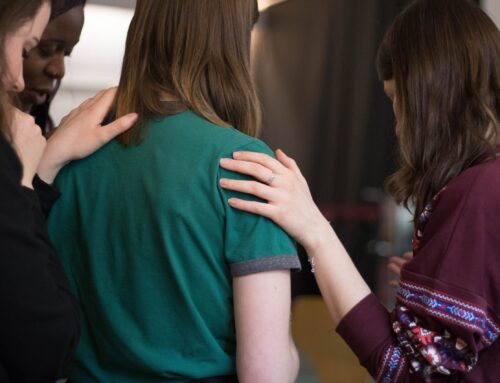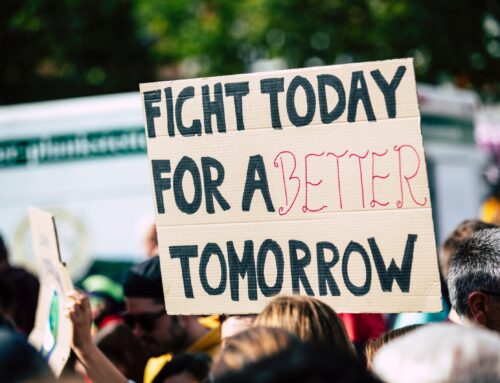 Three phrases that we commonly hear when people are talking about all the ways in which the pandemic of COVID-19 has challenged higher education are more troubling than helpful:
Three phrases that we commonly hear when people are talking about all the ways in which the pandemic of COVID-19 has challenged higher education are more troubling than helpful:
- “When it’s over,” or “When we get back to normal”
- The “silver lining”
- The “opportunity,” often mixed with “Never let a good crisis go to waste”
No one means any harm in saying those things. But it’s not going to be over, we’re not going back to normal, and it’s hard to see the silver lining when, as is true this afternoon, more than 43,000 Americans have died. This is not our first, and will not be our last, pandemic—just as this is not our first, and will not be our last, social and economic catastrophe.
An amusing post on Twitter this weekend said, “We’re living in the age of sweatpants, and we’re never going back.” What if we thought of the COVID-19 pandemic as hitting “reset,” rather than “pause”? What if we walked away from the idea of “getting back to normal,” and, instead, thought together about what we want for the future? About how we will support students—all students—and make it possible for them to take full advantage of what our community and technical colleges, four year institutions, and research intensive universities can provide?
Higher Education needs Long-Term Strategy Post-Pandemic
This is not an argument for a “new normal”—the term used carelessly as a kind of jargon to suggest that we must all accommodate to certain changes that we and our students might find inconvenient or challenging in some way. Instead, it is a plea against incremental thinking—the kind of analysis in which we try to imagine how things might change and require readjustments because of what we euphemistically call “the current circumstances.” We need a much longer term, more strategic view. What if we asked much bigger questions and thought collectively, deeply, and honestly about the possible answers?
For several years now, observers and administrators in higher education have been saying the business model of colleges and universities just doesn’t work; they’re right. For more years than that we’ve been increasingly worried about inequities throughout education, from pre-school to graduate and professional programs; we’re right about that, too. For more than a decade we have struggled to understand students’ rising levels of psychological distress and respond to higher demand for counseling and other mental health services; again, that’s right. More quietly, as we gather more convincing data about concussion injuries, many are asking whether football, as currently played, is viable or justifiable. Far less quietly, more of us have had a growing concern that college costs not only keep rising, but are creating barriers to student success and impoverishing students and their families.
It was Winston Churchill who famously said, “Never let a good crisis go to waste.” There is certainly nothing good about this crisis, or about the slower-motion crises such as those just mentioned that have elevated our levels of concern and decreased our confidence about the future of higher education. It is because there is nothing good about them that it hurts to think of the “silver lining” or the “opportunity” that COVID-19 has forced on us. Yes, we’re learning a lot. We need to repair our public health infrastructure and make sure our healthcare workers are protected and safe caring for us, no matter what happens. Some universities will undergo nearly unimaginable degrees of terrible, wrenching change that will harm students, staff, faculty, and communities. There are no “silver linings” in any of that.
So the biggest question is just this: what would our world, our society, our institutions, and our culture have to be like to keep us and our planet healthy and well in the future? To make sure we can educate all our children? To support the learning and wellbeing of every student? To make higher education what it should be—a place of higher learning, creative imagination, and, yes, enormous opportunity—not an increasingly commoditized, corporatized business with too many misplaced priorities? To truly put students first?
Higher Education Must Change After COVID-19 Pandemic
The COVID-19 pandemic is flourishing because we are not—because we have failed to care for our planet, ourselves, our institutions, and each other. It would be inhumane—indeed, heartless—to think of a crisis that is causing so much suffering, taking so many lives, and exacting such high economic and social costs as an opportunity. But in recognizing those extraordinary losses, we can be open to reflection about not just what happened, but why, and how things might have been different.
To just “go back to normal,” as if there were nothing to learn from so much pain, would be an affront to all humanity. How could we just accept the human, social, and cultural sacrifice that COVID-19 is causing, simply look past it, and move on—backwards, in fact, to some previous “normal.”
In fact, how dare we?
This article was written for the Council for the Advancement of Standards in Higher Education (CAS) 2020 Annual Board Meeting.
Keeling & Associates, LLC is a comprehensive higher education consulting and professional services firm that creates “change for learning.” K&A has helped higher education institutions create and execute risk management and campus reopening plans during global pandemics. Let’s work together to create change for learning.






Leave A Comment